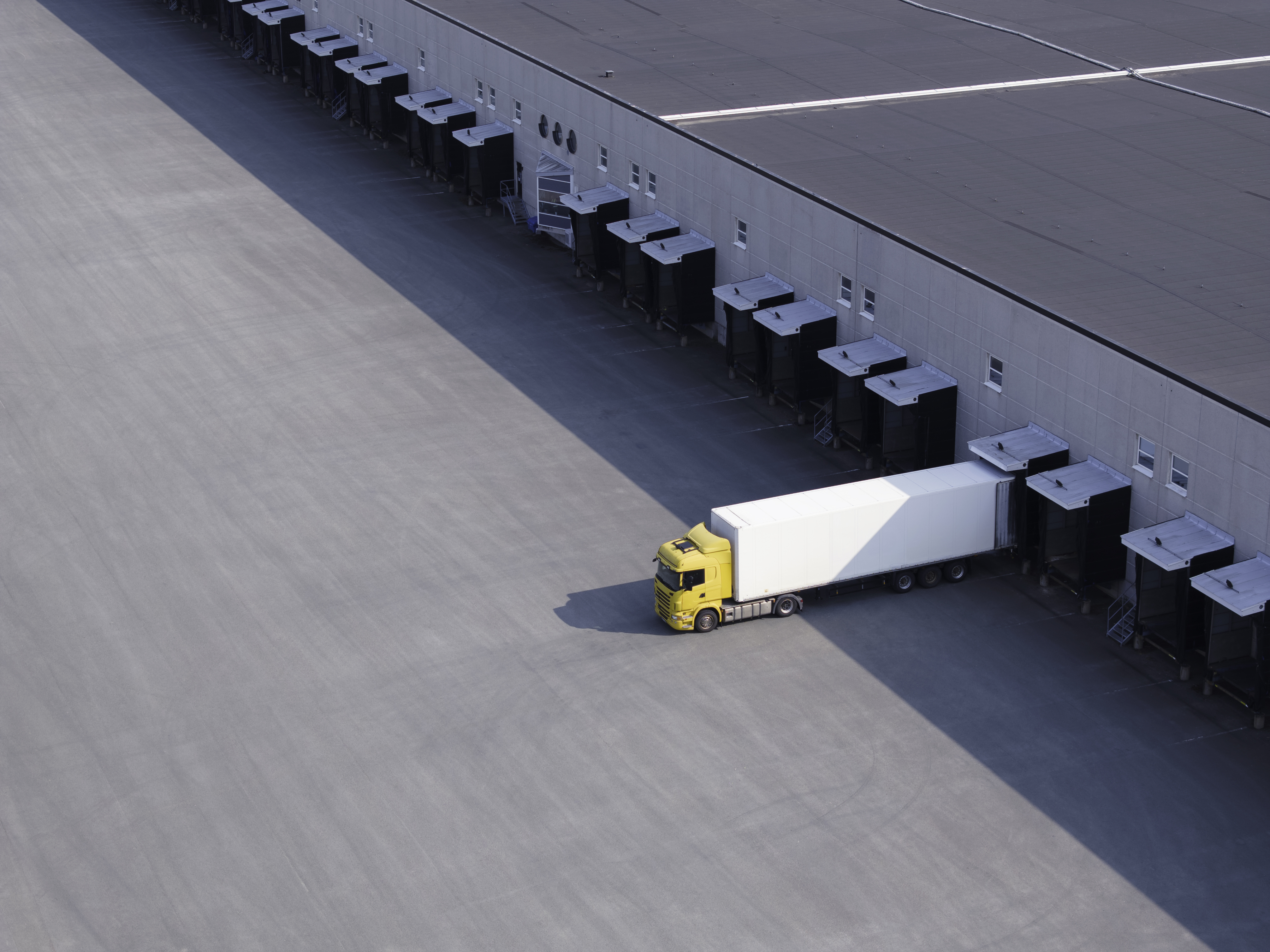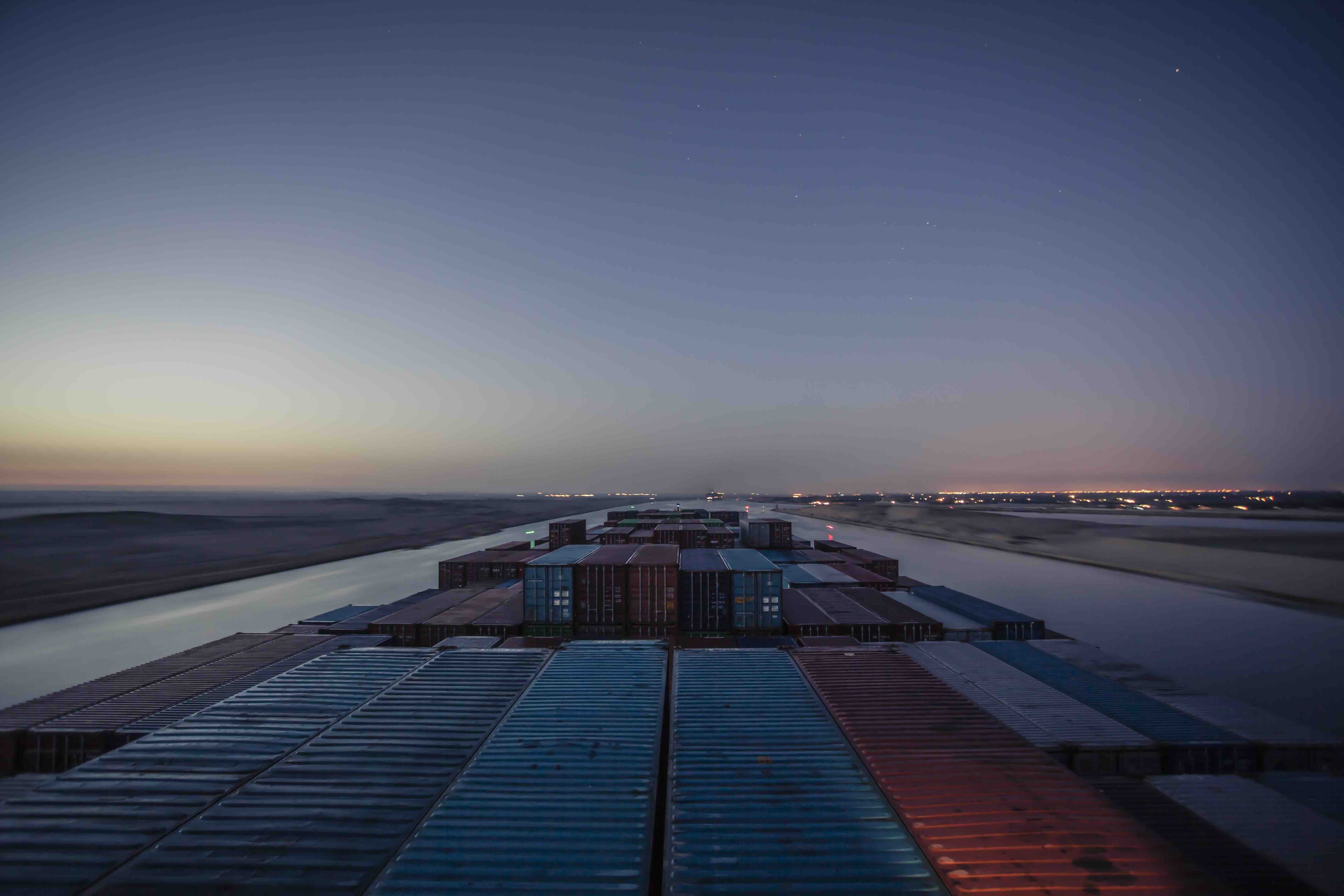
SPECIAL FEATURE 3/5. As elsewhere in Europe, road transport plays a major role in the movement of goods in the United Kingdom. The size of the British economy makes it an attractive market, even if the last two years have been difficult.
In 2019, the last full year before Brexit came into effect, the British road transport industry ranked 5th in Europe behind Germany, France, Spain, and Poland, with a total of 1,471 million tonnes and 160.8 billion tonne-kilometres (tkm) according to Eurostat data. It can be estimated that it has since retained its rank, although differences in statistical methods make exact comparisons difficult. The UK market remains an important economy, and a leading partner for the European Union.
However, British road carriers have been going through a difficult period for the past two years. Like their counterparts in the European Union, they are seeing an erosion in volumes after the strong post-Covid recovery of 2021-2022.
1/ Evolution of activity
In 2023, heavy goods vehicles over 3.5t travelled 16.9 billion vehicle miles, a decrease of 2.5% compared to 2022 and 1.6% compared to 2019. Lorry traffic on motorways was 8.1 billion vehicle miles (48% of the total), compared with 7.6 billion vehicle miles travelled on main A roads (45%) and 1.3 billion vehicle miles on minor roads.
- Domestic traffic
Domestic activity represents the vast majority of the activity of British road carriers, amounting to 96.5%. According to the UK Office for National Statistics (ONS), the GB-registered fleet recorded a volume of activity of 167 billion tonne-kilometres in 2023 in this domestic segment[1], down 5% from the previous year. Road transport thus held an 81% share of the transport of goods on the British domestic market, compared to 12% by water and 8% by rail.
The figures available to date for the year 2024 show that the erosion of road freight traffic observed in 2023 has continued. Year-on-year traffic at the end of the third quarter of 2024 was down 3% to 165 billion tkm. In tonnage, activity followed a similar curve, with a decrease of 5% to 1,552 million tonnes (Mt) in 2023, and a fall of 4% to 1,538 Mt year-on-year at the end of September 2024.
Heavy goods vehicles registered in the UK covered 19 billion tonne-kilometres, a decrease of 3% compared to 2022.
- International traffic
The decline is even more severe for international transport. The traffic in terms of tonnage for the UK fleet fell to 5.7 million tonnes in 2023, down 12.4% compared to 2022 and 30% compared to the average recorded between 2015 and 2019. The phenomenon is particularly noticeable for exports from the United Kingdom to Europe, even if both directions have been affected. "Over the last 20 years, the amount of goods lifted by UK-registered HGVs has been broadly decreasing for both imports and exports, with UK-registered HGVs usually importing more goods than exporting. The gap between imports and exports has widened in 2023 to 0.7 million tonnes compared to 0.4 million tonnes in 2022", the Office for National Statistics said. Compared to the 2015-2019 average, the decline in tonnage transported by British heavy goods vehicles amounts to -35% for exports and -24% for imports.
The top 5 countries for which UK-registered vehicles imported goods to, or exported them from have remained fairly stable over time. It mostly follows a geographical logic, with France and Belgium largely leading both imports and exports. However, the British fleet has been losing ground since Brexit. As such, in 2023, Italy took 5th place from Ireland in the import segment.
The decline in international activity also affects foreign-registered fleets. In 2023, foreign-registered heavy goods vehicles carrying goods to and from the UK carried 28 million tonnes, a decrease of 5.1% compared to 2022 and a decrease of 24% compared to the average number of tonnes carried between 2015 and 2019:
- Exports from the UK to Europe fell below 10 million tonnes, after a 4% decline in 2023 and a 32.2% decline compared to the 2015-2019 average.
- UK imports from Europe via foreign fleets decreased by 5.6% compared to 2022 and by 19.3% compared to the 2015-2019 average.
The Polish-registered fleet occupies a prominent place in the landscape of foreign carriers active on international routes from the United Kingdom, both for imports and exports, followed by the Irish fleet. Overall, Eastern European fleets have shown strong growth in the UK market, as in Western Europe as a whole. There is also a strong presence of Spanish carriers from the continent to the United Kingdom.
Regarding imports to the UK, vehicles registered in Poland also accounted for the largest share, increasing from 22% in 2012 to 28% in 2022, while that of vehicles registered in Romania increased from 2% to 6%.
For both imports and exports, the majority of goods transported by vehicles registered in Poland and Romania are goods in transit.
2/ Characteristics of British Road Freight Transport
- Turnover and gross added value
The sector's overall turnover reached £37.1 billion in 2023 (around €43 billion), down 2% from a record year in 2022. Gross added value also fell by 5% to £16.9 billion (€19.7 billion), or 15.6% of the gross added value of the transport and warehousing sector.
- Number of companies
In the United Kingdom, as on the European continent, the road freight transport sector is characterised by strong fragmentation, which peaked in 2020. But since then, the number of companies has continued to decline, and the drop was particularly drastic in 2023, with a fall of 17%. The sector since then has just over 46,000 companies: you have to go back to 2015 to find such a low figure. These are overwhelmingly small businesses, with 92% having fewer than 10 employees.
*Evolution of the number of road freight transport companies in the UK
"The presence of road haulage companies is concentrated around the Midlands, which are connected to the rest of the UK by three major motorways (M42, M1 and M6, also known as the 'golden triangle'), offering the possibility for road haulage to reach around 90% of the UK territory in less than four hours," states a study by AtkinsRéalis UK road transport market forecast published in 2023.
- Fleet
According to the latest report from the European Automobile Manufacturers' Association (ACEA) on vehicles in circulation in Europe, the UK HGV fleet stood at 780,919 vehicles in 2023, an increase of 2.9% compared to 2022. The average age of heavy goods vehicles in circulation is 11.6 years, making it a relatively young fleet. The energy transition, on the other hand, is lagging behind a little since 98.1% of heavy goods vehicles run on diesel, compared to an average of 96.4% in the European Union.
In 2023, the market for new heavy goods vehicle registrations fell by 2.1%, with a total of 54,016 registrations of vehicles weighing over 3.5t. The +16 tonne market represents almost three-quarters of registrations (38,857), but it fell by 7.7% in 2023, while the segment of vehicles from 3.5t to 16t grew by 17.8% to total 14,017 registrations.
The challenges facing British road freight transport
- Driver shortages
In 2023, the number of heavy goods vehicle drivers in the UK fell by 5% to 271,800. Like all European countries, the country is facing a situation of shortage. However, this is less critical than in 2020-2021. At the time, Covid-19 had led many EU drivers to leave the UK. Many did not return to the UK as Brexit had complicated administrative procedures. In 2021, the country experienced a very critical situation, just as demand for road transport was booming again. The government came to the rescue of the sector with a program that included short-term actions, such as exemptions from driving time limits and assistance for hiring apprentices, as well as medium-term measures. In particular, in 2022, it set up free training courses, the so-called “Skill Bootcamps”, and the programme has since been extended up until February 2026. More than 10,000 new drivers have obtained their licenses through these courses since 2022, according to the Road Haulage Association (RHA).
While the situation has improved, labour shortages will remain a concern for the years to come. Today, the average age of an HGV driver in the UK is 51, and according to the latest figures from Logistics UK, 48.7% of current drivers are over 50. This therefore suggests a strong need for renewal. “And while salaries advertised for drivers rose almost 4% in the final quarter of 2024, compared to the previous year, vacancies rose by more than 33%, and the number of HGV tests taken in the year to November 2024 dropped by more than 20% year on year, meaning that businesses must do more to appeal to future generations of drivers.” warns Logistics UK
- Increased operating costs
In its latest annual cost and pay survey for road transport, the RHA points out that 2024 has been another difficult year for operators. Road transport companies are facing a persistent rise in operating costs. The RHA's survey of its members in early October 2024 put the increase at +3.58%, including fuel. The situation for costs excluding fuel remains even worse, at +5.95%. "The 44-tonne cost model demonstrates annual costs of £160,604 excluding fuel and additive. This is an increase of £9,025 on the previous year. Including fuel and additive gives the total annual costs for the 44-tonne of £208,397 with fuel at an average price of 113.46 pence per litre to the end of September", the RHA said.
According to the members surveyed, these cost increases most often outstrip past rate increases for customers, which is having an impact on the health of businesses. "Last year saw nearly 500 firms collapse and this year has continued with failures of many well-regarded and previously successful operators," the RHA said, without specifying the number of failures for 2024.
- Decarbonisation
In 2022, the UK government committed to ensuring that by 2040,100% of new heavy goods vehicles coming into the market will be zero-emission vehicles. But as in all other European countries, the question of the cost of decarbonisation is a crucial issue.
Small businesses, which constitute the vast majority of the market, tend to favour used vehicles, which could delay the adoption of zero-emission vehicles. The cost of purchasing these vehicles remains an obstacle. To encourage the transition, the State set up a support system for the purchase of electric trucks a few years ago. The subsidy rate for eligible vehicles is set at a maximum of 20% of the purchase price, and funding of up to £25,000 for trucks weighing more than 12 tonnes is planned.
On April 1, 2025, Transport Minister Lilian Greenwood announced the extension of this grant until April 2026. The Road Haulage Association welcomed this decision but believes that "additional financial support will be needed."
Overall, UK road freight transport ultimately faces challenges quite similar to those faced by the Western European EU fleets, although some difficulties may be exacerbated by insularity and the consequences of Brexit.
[1] National road transport carried out by vehicles of +3.5t registered in the United Kingdom
Our latest articles
-
5 min 12/12/2025Lire l'article
-
2025 review of road transport in Europe
Lire l'article -
Return of shipping via Suez: the surprising silence of shippers
Lire l'article


